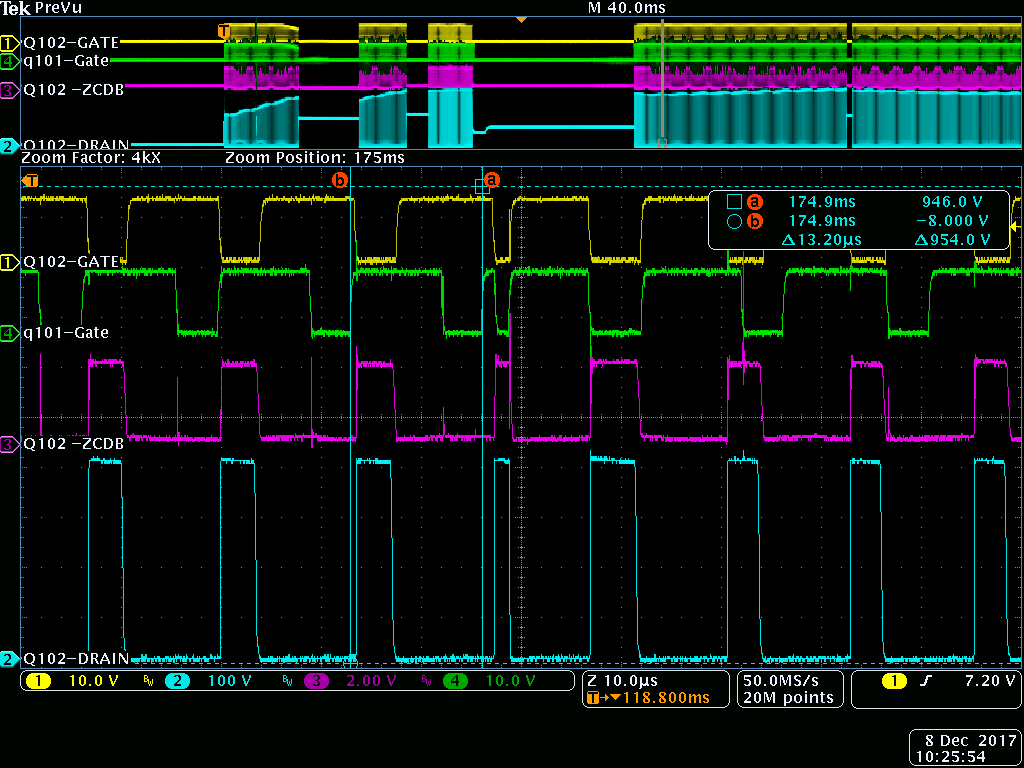This is being reposted to include the Schematic and Signal Waveforms -----Third Try's a Charm.
Gentlemen-
Expected the UCC28061 PFC controller to run in the "Phase" interleaved mode to reduce capacitor filter ripple current.
Looking for an explanation for "rogue' gate drive pulses using the UCC28061 interleaved PFC boost controller. After the unit has started and is running into a constant current 500W DC output load we find the controller gate drives have a single "pulse" that randomly appears. The circuit has been running in a "phase" mode and then appears to change over to a "synchronous" mode for a single cycle. It then quickly reverts back to "phase shifted" mode operation. The load is fixed and the AC input line is set at 100 Vac.
Circuit Schematic Reference:
O-Scope Trace Phase - Sync- and back to Phase mode:
The top yellow trace is the boost Fet Q102 gate drive and the green channel is Q101 Fet gate drive. The two are in a phase mode most of the time. Towards the center of sweep the "green" trace Fet Q101 gate drive adds a "short pulse" and the next cycle becomes a "synchronous" event for both Fet's Q101 and Q102. The following drive cycle you see it has transitioned back in to a "phased " gate drive sequence.
Our functional expectation was the controller would transition into a stable "Phase" mode operation and only change if an over current drive cycles are detected.. Is this correct ?
What may cause the controller to randomly inject a "short " gate drive cycle as seen above ? Outside of the over current detection fault is there another way for it to transition in and out of the "phase" mode ?
Thanks-
John



